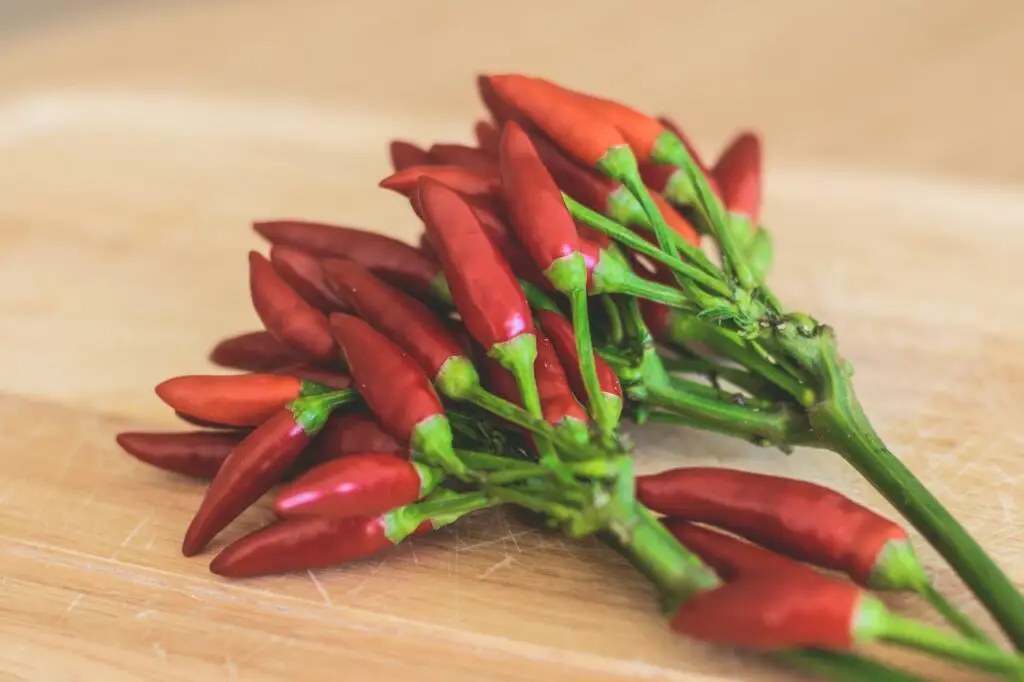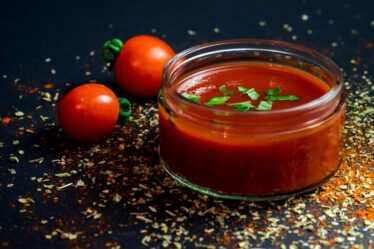
The Ultimate Guide to Spices: Uncovering the Hidden Flavors of the World
Step into the vibrant world of spices as we unveil the ultimate guide to unlocking their hidden flavors. These aromatic treasures can take any dish to new heights thanks to their diverse and enticing fragrances, which range from the searing heat of chili peppers to cumin and coriander.
(Delicious Spices) Spice up your culinary repertoire with our comprehensive guide to exploring the incredible diversity of spices from around the world. Discover the secrets behind each spice’s unique taste profile and learn how to pair them expertly for maximum flavor impact. Regardless of your level of experience as a chef or your level of adventurousness as a home cook, this book will lead you on a thrilling voyage through an array of flavors and scents.
(Food Lovers) Get ready to explore the wonderful world of spices on a delectable journey. With our ultimate guide, you’ll uncover a treasure trove of flavors that will transform ordinary meals into extraordinary culinary delights. From the fragrant warmth of cinnamon to the bold tang of turmeric, there is a spice for every palate and every dish. Join us as we dive into the rich histories and multifaceted uses of these aromatic seasonings, and learn how to master the art of spice blending to create unforgettable flavors in your kitchen.
So gather your mill and pestle and get ready to use our comprehensive guide on spices to discover the rich tapestry of world cuisine. Let’s awaken your taste buds and unlock a world of untapped flavor potential.
Understanding the different types of spices
Spices have a rich and storied history that spans centuries and continents. They have been treasured for their culinary and medicinal properties, as well as their cultural significance. The world as we know it now was significantly shaped by the trade routes that transported spices from far-off places.
In ancient times, spices were highly valued commodities that were used as currency, and they were even considered more precious than gold. Because of the allure of spices, adventurers set out on perilous journeys to find new trade routes, which ultimately resulted in the discovery of new regions and the colonization of nations.
Spices were used not only for their flavor-enhancing properties but also for their medicinal benefits. Many spices have antimicrobial and anti-inflammatory properties, making them valuable for preserving food and promoting health. In traditional medicine systems like Ayurveda and Traditional Chinese Medicine, spices are used to balance the body and treat various ailments.
The cultural importance of spices cannot be overstated. They have been woven into the fabric of societies, shaping traditions, rituals, and even religious ceremonies. Spices can transport us to different times and places, evoking memories and creating a sense of nostalgia.
Health benefits of using spices in cooking
Spices come in a wide variety of forms, each with its unique characteristics and uses. Understanding the different types of spices is vital to unlocking their full flavor potential in your cooking.
1. Whole Spices: Whole spices are spices that are used in their natural form, such as whole peppercorns, cinnamon sticks, and cardamom pods. They are usually toasted or ground before use to release their flavors.
2. Ground Spices: Ground spices are spices that have been finely powdered, such as ground cumin, turmeric, and paprika. They are convenient to use and can be easily incorporated into dishes.
3. Spice Blends: Spice blends, also known as masalas, are mixtures of different spices that are ground together. Examples include garam masala, curry powder, and chili powder. Blends of spices give food more nuance and complexity.
4. Fresh Spices: Fresh spices, such as ginger, garlic, and fresh herbs, are used to add brightness and freshness to dishes. They can be minced, grated, or chopped before use.
5. Dried Spices: Dried spices, such as dried chili peppers, dried herbs, and dried citrus peels, are used to add concentrated flavors to dishes. They are often toasted or rehydrated before use.
Understanding the different types of spices allows you to make informed decisions when choosing spices for your recipes and enables you to experiment with other flavor profiles.
Popular spices from around the world
In addition to giving your food flavor, spices have numerous health advantages. Incorporating spices into your cooking can boost your overall well-being and add an extra layer of nutritional value to your meals.
1. Antioxidant Powerhouses: Antioxidants, which are abundant in many spices, aid in shielding the body from free radicals and oxidative stress. Turmeric, cinnamon, cloves, and ginger are all potent sources of antioxidants.
2. Anti-inflammatory Properties: Inflammation is a key driver of many chronic diseases. Because of their anti-inflammatory qualities, spices like garlic, ginger, and turmeric can help lessen inflammation in the body.
3. Digestive Aid: Certain spices, such as cumin, coriander, and fennel, have been used for centuries to aid digestion. They can help relieve bloating, gas, and indigestion.
4. Metabolism Boosters: Certain spices, such as black pepper and chili peppers, have thermogenic qualities that can speed up metabolism and help control weight.
5. Blood Sugar Regulation: Spices that have been demonstrated to help control blood sugar levels, such as fenugreek and cinnamon, are advantageous for people who already have diabetes or are at risk of getting it.
By incorporating spices into your cooking, you can not only enhance the flavor of your dishes but also support your overall health and well-being.
How to properly store and use spices
Spices are an integral part of cuisines from all corners of the globe. Each region has its unique spice blends and flavor profiles that reflect its cultural heritage and culinary traditions. Let’s explore some of the most popular spices from around the world and the dishes they are commonly used in.
1. Cumin: A common spice in Mexican, Indian, and Middle Eastern cooking is cumin. It tastes warm and earthy with a faint citrus undertone. Curries, stews, and spice mixtures like garam masala and taco seasoning frequently contain cumin.
2. Coriander: Coriander is widely used in Asian, Middle Eastern, and Mediterranean cuisines. It has a fresh and citrusy flavor that pairs well with cumin. Coriander is used in curries, salads, and marinades.
3. Chili Peppers: Chili peppers come in various forms and heat levels, from mild to fiery hot. They are used in cuisines around the world to add heat and spice to dishes. Chilli peppers are a staple in Indian, Thai, and Mexican cooking.
4. Cinnamon: Cinnamon is a versatile spice used in both sweet and savory dishes. It goes nicely with fruits, chocolate, and warm drinks because of its warm, sweet flavor. Cinnamon is commonly used in baked goods, curries, and spiced beverages.
5. Turmeric: Turmeric is known for its vibrant golden color and earthy flavor. It is a crucial ingredient in Indian and Southeast Asian cuisines. Turmeric is used in curries, rice dishes, and golden milk.
Exploring unique and lesser-known spices
Proper storage and usage of spices are essential to maintain their freshness and flavor. Here are some tips to help you make the most of your spice collection:
1. Store in Airtight Containers: To keep them safe from moisture, light, and air, spices need to be kept in sealed containers. The best containers for maintaining the strength and freshness of spices are glass jars or tins with tight-fitting lids.
2. Keep Away from Heat and Light: Spices should be stored in a cool, dark place away from heat sources like the stove or oven and direct sunlight. Spices can lose their taste and power when exposed to heat and light.
3. Label and Date your Spices: To keep track of your spice collection, label each container with the name of the spice and the date it was purchased. This will help you identify and use spices before they lose their flavor.
4. Grind Spices as Needed: For the best flavor, it’s recommended to grind whole spices just before using them. Compared to pre-ground spices, whole spices have a longer flavor and aroma retention period.
5. Use Fresh Spices: Spices lose their flavor over time, so it’s vital to replenish your spice collection regularly. Buying spices in small quantities and grinding them as needed ensures that you’re using fresh spices in your cooking.
By following these storage and usage tips, you can ensure that your spices retain their flavor and aroma, allowing you to create delicious dishes every time.
Spice pairings and flavor combinations
While many spices have become kitchen staples, there is also a plethora of unique and lesser-known spices waiting to be discovered. These hidden gems can add a new dimension of flavor to your culinary creations. Let’s explore a few of these spices:
1. Saffron: One of the most costly spices in the world, saffron is prized for both its delicate flavor and vivid color. It is used in a variety of dishes, from paella and risotto to desserts like saffron-infused ice cream.
2. Sumac: Sumac is a tangy spice commonly used in Middle Eastern and Mediterranean cuisines. It has a lemony flavor that adds brightness to dishes. Sumac is often sprinkled on salads, roasted vegetables, and grilled meats.
3. Cardamom: The spice cardamom is highly aromatic and has a sweet, floral flavor. It is widely used in Indian and Scandinavian cuisines. Cardamom is used in curries, desserts, and even in coffee for a fragrant twist.
4. Star Anise: Star anise is frequently used in Chinese and Vietnamese cuisines because of its distinctive licorice-like flavor. It is a necessary component of Chinese five-spice powder, which is used in marinades, braises, and soups.
5. Za’atar: Za’atar is a Middle Eastern spice blend that typically includes dried thyme, sesame seeds, sumac, and other herbs. It is used as a seasoning for bread, vegetables, and meats and can also be mixed with olive oil as a dip.
Exploring unique and lesser-known spices allows you to expand your culinary horizons and create genuinely one-of-a-kind dishes.
Incorporating spices into different cuisines
Mastering the art of spice pairing and flavor combinations is vital in creating harmonious and well-balanced dishes. Combining spices that complement each other can elevate the flavor profile of your meals. Here are some classic spice pairings and flavor combinations to inspire your culinary creations:
1. Cumin and Coriander: The combination of cumin and coriander is a classic pairing in many cuisines. It enhances the flavor and complexity of foods like stews, curries, and roasted veggies.
2. Ginger and Garlic: Ginger and garlic are a dynamic duo that packs a punch in Asian-inspired dishes. The spicy and pungent flavors of ginger complement the savory notes of garlic, creating a well-rounded flavor profile.
3. Cinnamon and Nutmeg: Cinnamon and nutmeg are often used together in sweet dishes like pies, cakes, and cookies. These spices’ rich, warming tastes produce a cozy, decadent palate experience.
4. Chili and Lime: The combination of spicy chili peppers and tangy lime is a match made in culinary heaven. It adds a zesty kick to dishes like tacos, ceviche, and stir-fries.
5. Turmeric and Black Pepper: Turmeric and black pepper are often used together in traditional Indian cooking. The molecule curcumin, the active ingredient in turmeric, is more bioavailable when mixed with black pepper, which increases its potency.
You may let your inner chef go and make meals with a ton of flavor and complexity by experimenting with different spice combos and taste combinations.

Conclusion: Embracing the diverse world of spices
Spices are the backbone of many cuisines around the world. They add distinctive flavors and aromas that define the culinary traditions of different regions. Here are a few examples of how spices are incorporated into various cuisines:
1. Indian Cuisine: The utilization of spices such as cumin, coriander, turmeric, cardamom, and cloves lends Indian cuisine its distinct and potent flavors. Spices are often toasted and ground to release their flavors before being incorporated into curries, rice dishes, and flatbreads.
2. Moroccan Cuisine: Moroccan cuisine is a fusion of flavors from Africa, the Middle East, and Europe. It features spices like cumin, coriander, cinnamon, turmeric, and saffron. These spices are used to create complex spice blends like ras el hangout and harissa, which are used in tagines, couscous, and stews.
3. Thai Cuisine: Thai cuisine is known for its vibrant and aromatic flavors, thanks to the use of spices like lemongrass, galangal, ginger, chili peppers, and Thai basil. These spices are used to create the signature balance of sweet, sour, salty, and spicy flavors in dishes like curries, stir-fries, and soups.
4. Mexican Cuisine: Mexican cuisine is a celebration of bold and fiery flavors. Spices like chili peppers, cumin, coriander, oregano, and cinnamon are used to create rich and complex flavors in dishes like mole, tacos, and salsas.
By incorporating spices from different cuisines into your cooking, you can transport your taste buds to different corners of the world and create a genuinely multicultural dining experience.



